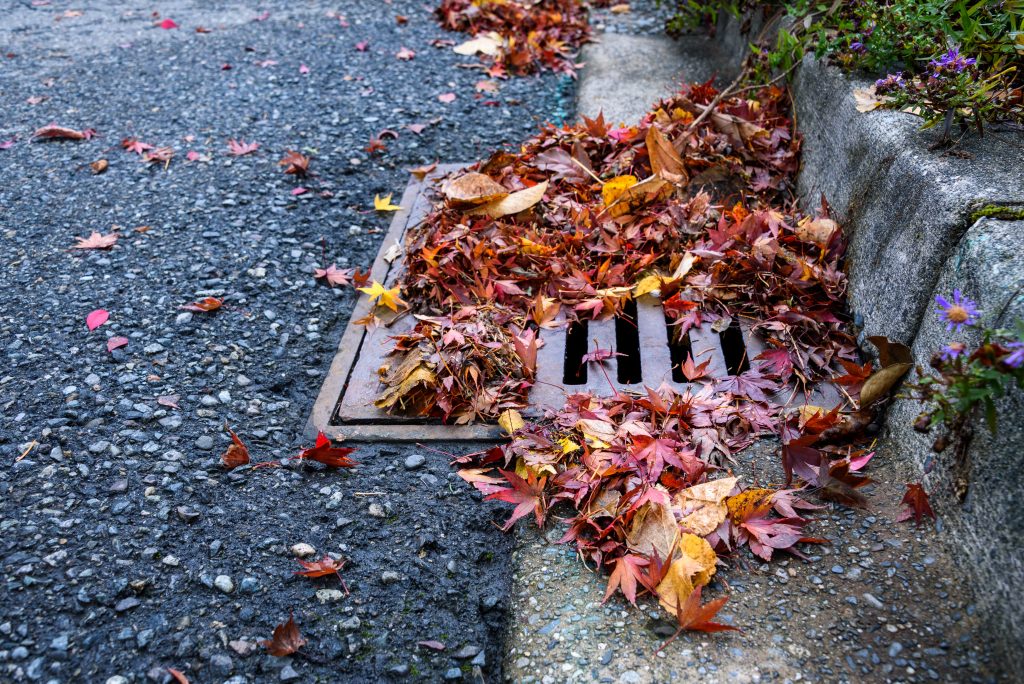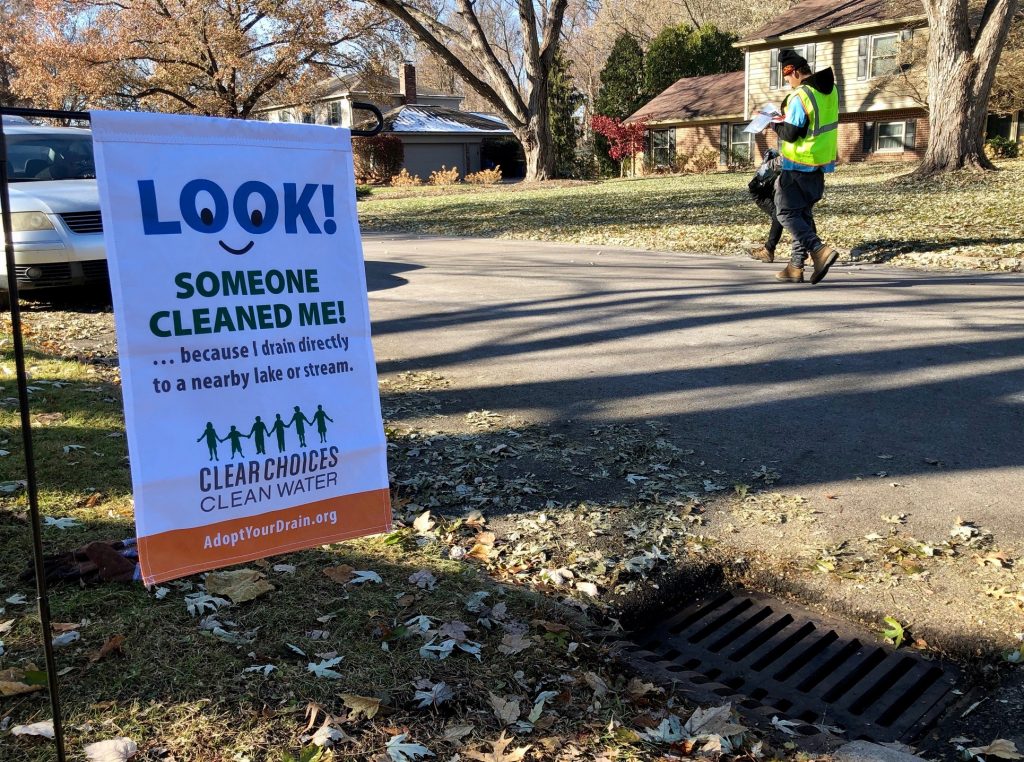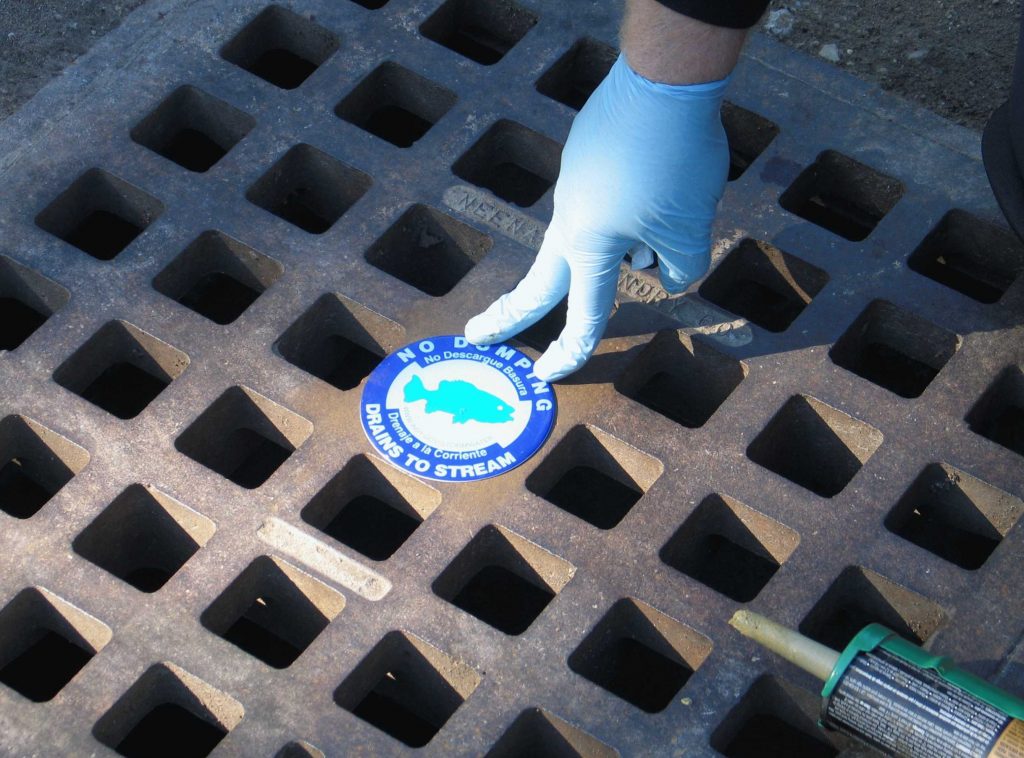Adopt A Storm Drain
Many communities have programs designed to steward and maintain local storm drains. Even if your community doesn’t have a formal program, you can still do your part for water quality by adopting a storm drain. Learn what’s involved below. Afterwards, adopt a drain yourself, organize storm drain cleanups in your neighborhood, or start a Local Campaign.
Please exercise caution when clearing storm drains. Your safety if the top consideration during cleanup efforts. If you were to get hurt, who’s going to watch your storm drain? Please follow these guidelines
- Never remove the grate or cover
- Stand on the curb when clearing drains, not in the street
- Only clean curbside storm drains
- Do not attempt to clear drains on major streets and arterials
- Watch out for traffic and wear brightly colored clothing or a safety vest to make sure you’re seen
- Move your garbage can or place a traffic cone into the road ahead of you
- Do not try to clear your drain when there is standing water
- If possible, clear the drain before it starts raining
- Never use your hands to move debris
- Wear gloves and always use a broom or rake to clear the drain
- Use a dustpan, shovel, or a trash can lid to pick up debris
- Clear surface debris only—do not try to clean anything in the catch basin.
- Put polluted street leaves, trash, and other debris into the garbage
Why Are Storm Drains Important?

Storm drains are a normal part of street or parking lot infrastructure. They are designed to collect and redirect excess runoff from rainfall or flooding. Located most often at the low curb of a street or set off of the road in a drainage area, storm drains move water off the street and into a piping system below ground.
In some areas, usually older parts of cities, the storm drain system is connected to the sanitary sewer system. This means the water from both systems is combined and treated in a local wastewater treatment facility before being released into waterways. But in many cases, storm drains are part of a separate pipe collection system that flushes stormwater – without any treatment at all – directly into streams, rivers, and lakes (and ultimately the ocean). Both systems can cause flooding downstream and also contribute significant pollution (oil, fertilizers, pet waste, yard debris, sediment, E. coli, etc.) into our waterways.
If you want to pledge to keep a storm drain clean in your neighborhood, here’s what’s involved:
Step 1: Keep it Clean

Keep all leaves, limbs and debris cleared away from drains. When debris clogs drains, water can’t flow into the drain properly, resulting in ponding and flooding. Also, any material that enters a storm drain will end up in a local stream if the pipe is not directed to the wastewater treatment plant (most are not). There are the usual offenders that end up in storm drains: pet waste, oils from parking lots and driveways, lawn fertilizers, and street litter. But even natural materials such as leaves and grass clippings can degrade water quality. Only rain in the drain!
Remember to check the drain BEFORE a rain event! Use a rake or broom to keep leaves and other materials clear of the drain. (Leaves and lawn clippings should be bagged, composted or used for mulch in your yard!) In winter, snow and ice can block the drain, so when possible, remove snow and ice to create a 1 foot path along the curb leading to the drain. Pollutants from yards and streets accumulate in the snow and ice over the winter and then rush into drains and nearby streams during spring thaws.
Step 2: Report Polluters
If you see someone dump anything into the street or directly into a storm drain, report it to your local public works department or to the Complaint Coordinator at the Indiana Department of Environmental Management at (800) 451-6027 ext. 24464. Pouring anything into a drain is not only bad for water quality and wildlife but illegal in most places.
Find your local Report-a-Polluter contact.
Step 3: Map It
When you pledge to adopt a drain through this site, we will ask you to provide the location of the drain you are adopting. We’ll provide this information to the local Clear Choices Clean Water sponsor in your area. They may be in contact with you and will certainly appreciate your help!
You can also challenge your neighbors to adopt the drain nearest their houses to help spread this important practice.
Mark It

Some communities have storm drain markers (adhesive decals) while others actively paint stencils on local drains in order to bring attention to them.
Properly Draining Pools
Warm summer weather and swimming seem to go hand-in-hand. But when those temperatures and autumn leaves start dropping, make sure you are draining your swimming pools properly. Recently, there have been a rise in citizens switching over to saltwater pools rather than chlorinated pools. When draining these pools, there is a little bit of a difference from your typical routine for chlorinated pools.
Saltwater pools use salt chlorine generators to convert salt added to the water into chlorine. The range of salt in a saltwater pool is around 3,000 to 4,000 ppm. Annually, saltwater pools tend to cost less than traditional chlorine pools, which is why they are becoming more commonly seen in communities.
Like chlorinated pools, you cannot dispose of saltwater into storm drains untreated. Salt is considered a chemical, and if untreated water enters a nearby stream or creek, it can be harmful to the water quality, aquatic wildlife, and vegetation. You also cannot drain saltwater pools into your lawn. With the high concentration of salt in the water, the grass, plants, and trees will be put under a lot of stress. This stress can damage or kill vegetation that cannot tolerate the salt. Going deeper, the salt disposed of will remain in the soil for years. This can prevent plants from reaching their full growth potential and even kill them in the future. If saltwater is drained into your lawn, you can remove some of the sodium from the soil with a gypsum treatment. But this may require multiple applications to return your soil to its normal sodium levels. If you have clay soil, it can take even longer to return the sodium levels to normal.
There are different options to properly draining your pools without harming the environment or your lawn.
- Drain water into a sanitary sewer line connection, these can be found by a sink, bathtub, or washer
- Contact a licensed hauler to truck away your contaminated water
Whatever you decide to do with your swimming pool water, just remember to never drain into a septic tank or storm drain. To learn more about draining chlorine pools, visit the Department of Energy & Environment’s webpage.